EPISODE 6: Incorporating Patient and Community Voices in State-Level APM Implementation, featuring Dr. Judy Zerzan-Thul, Washington State Health Care Authority
“We, as state health policy makers, think we know how to fix a problem. And then we talk to someone who’s actually experiencing that problem, and we get a whole new perspective that we maybe wouldn’t have seen before. And I think by experiencing that healthcare and what people struggle with, it can really help change the system.”
— Dr. Judy Zerzan-Thul, Health Care Authority
Washington State’s Chief Medical Officer and LAN Executive Forum Co-Chair Judy Zerzan-Thul, M.D., M.P.H., joins host Aparna Higgins, senior policy fellow at the Duke-Margolis Center for Health Policy at Duke University and senior advisor to the LAN, in this episode of Spotlight on Action. They discuss why it’s critical to incorporate patient and community voices into state-level APM implementation and how to accomplish that. Dr. Zerzan-Thul shares examples of progress and success from her experiences in Washington State and Colorado. The episode also covers the need to move from fee-for-service into more value-based payments and the biggest challenges for effective health equity initiatives.
Episode Q & A
(02:16) Starting with state-level innovation, I thought I'd start by asking you why APM design and implementation at the state level is so important.
I think I’d just like to put out there, our healthcare system is not designed to optimize health, and that’s a critical problem. As currently structured, our healthcare system, which has been created and reinforced by the fee-for-service payment you mentioned, really results in a sick care system. And so, value-based payment, or VBP, is necessary for communities and for patients to get better healthcare, to have better quality of life, functioning, all that sort of thing. And I think the state action is where it’s at. States are really the laboratory of reform and have flexibility to try out different ways of doing things and optimize how to do it best, and I think Washington is a great example of that. The Washington State Health Care Authority where I work currently covers about 2.5 million Washingtonians through Medicaid, public employees, school employees, and retirees, and we are and have been committed to transforming the healthcare payment and delivery system.
So VBP comes in because it can really be the driving force, be, behind the behavior change and delivery system transformation. In theory, VBP should achieve the triple aim by reducing unnecessary and low value healthcare, lower cost, rewarding preventative and whole-person care, which is better health, and rewarding the deliver, delivery of high-quality care, which is better quality and experience. And I’d like to tag on to that should really be the fourth aim too. It results in a better provider or clinician experience by providing this good care. And as the largest purchaser in Washington State since 2016, we have set goals for our spending to drive that healthcare system transformation through paying for value. So, our initial goal was to have 20% of our total dollars, both on the Medicaid side and the state employee side be spent in value-based ways. And we initially set that goal, and when we measured it, we made it to 30%. So, we were super excited. And in 2020, we hit 77% of our payments on the Medicaid and employee side in value-based arrangements, which is great. That being said, it’s not quite enough. And so, we really do want to continue to leverage our purchasing power to move 90% of our market from fee-for-service to value-based payments and help influence the commercial market to also be moving to VBP. And we do this through a one HCA lens. So really thinking about the whole population, both are commercially insured and the Medicaid folks and moving beyond our goals past 2021, we are really moving like the LAN is into how do we move into two-sided risk models, so categories 3B and beyond, and how do we use our purchasing power to reduce health inequities? Because I think that’s a key part of the work we have to do today.
(06:05) Could you talk a little bit about the, some of the biggest challenges to implementing effective health equity initiatives into APM design and how you're addressing those challenges in your work in Washington?
I think first off, community engagement is really important to ensure we meet communities and populations where they’re at. And besides, they’re the end user, the people that are getting healthcare. I think part of that engagement is also important with providers and clinicians to avoid additional provider burdens. So, I think we need to have effective conversations to agree on some shared goals about what are the most important health equity actions we need to take in Washington State.
A second big challenge that I know others are struggling with is health equity benchmarks. How do we measure health equity, and how do we set those goals? We will never get to perfect, we’ll never get to a hundred percent or 0% depending on what the metric is, but we can make progress. And we need to, we need to set some goals that are both achievable and are stretch goals to keep us moving in the right direction to improve health equity.
The third challenge, I think, is that there’s a lot of competing priorities, and there’s a lot of work to do with health-related social needs. There’s a lot to do with workforce, and how do we have the right workforce to do some of this work? And so, it can be hard to figure out where do we start and what does the end look like?
Fourth, I’d like to talk about how we to get to equity and outcomes, which I think is our ultimate goal. There needs to be equity in health benefits too. And I think that this difference is particularly stark in the behavioral health world. As an example, in the latest national healthcare quality and disparities report, there are nine measures that relate to mental health and substance use disorder care. And over time, only one has improved and that’s treating depression in nursing home residents. The others either haven’t changed, and three of them have even worsened, and so I think while we talk about race and ethnicity, we also need to think about what kinds of care is being provided and how there might be gaps or further disparities in whether good behavioral healthcare is being provided. And I think along with that, tying behavioral health back to, to VBP, I think in the behavioral health world, value-based purchasing isn’t well understood. And that’s for a number of reasons that I think are fixable but haven’t yet been addressed. So, I think when you look at behavioral health quality measures, there’s a lot of measures that mostly measure structural things like utilization and not outcomes, and there’s not good data to be collected. And so, I think, data is my final piece of how do we get to good health equity. We need good ways to measure it and consistent ways to measure it so that we can really make an improvement.
(09:53) I'm curious in terms of, are there particular ways in which you are approaching solving some of these challenges in Washington that you'd want to share with our listeners?
So, I think the data systems is somewhere that we are really leaning in. We’ve definitely made investments, particularly in our last legislative session, actually the last couple of legislative sessions. We’ve made some big investments in behavioral health and figuring out that workforce, and we’ve started to make some investments in data infrastructure and HIT, and I think that that is going to be really important to build that base and have it be statewide so that we can have both the workforce of clinicians able to provide the care and the data to be able to measure it and interoperability to share that information across different systems.
(11:06) One of the challenges you mentioned was social determinants of health. So to follow up on that, how can doctors and other medical professionals incorporate these social determinants of health into their care models?
I think, is really important because especially Medicaid folk are often medically and socially complex, and to get to better health, you have to address both the physical and behavioral health needs and the social needs. And I think that’s really hard to do at an individual level. I think there needs to be systems changed, [that] healthcare systems that clinicians work on need to create strategies to help them address social determinants and to help them address equity. It’s really hard to do one-on-one with an individual patient and make a lot of effect. I think change is hard to do. And so, having the systems help set up the structure so that that can be part of the clinic workflow, so that can be part of what is seen as important in healthcare delivery, I think, is critical. And to do some of that, we need those data systems. We need CIE, community information exchange, so that not can only healthcare information be exchanged but also community information of how do we do those closed-loop referrals to get people the services that they need and the services that they want. So, you know, which agency is best for them to help with housing. And how do we really make sure that that happens? I think those are important things that both clinicians and healthcare systems can work on.
(13:07) One of the other things you mentioned was the importance of having shared goals and bringing people to the table. And we know that we're all focused on creating a much more person-centered healthcare system. So, what role do community voices and patient advocates have in determining the appropriate design and implementation of APMs?
I think it’s essential to include community voices when designing these programs and that you have to have people at the table who have experienced health-related social needs, people who have Medicaid, and then work to understand their point of view and give them some power into how to change care to help meet their needs. I think it’s not easy, and in both Colorado and Washington, I’ve had these things where we, as state health policy makers, think we know how to fix a problem. And then we talk to someone who’s actually experiencing that problem, and we get a whole new perspective that we maybe wouldn’t have seen before. And I think by experiencing that healthcare and what people struggle with, it can really help change the system. And so, so I think that’s important. And in Washington, we have Accountable Communities of Health, and we are currently, they’re part of our Medicaid 1115 waiver. And there are nine of them that cover the state. Each has a distinct region, and each of them are unique, but they all have a common approach to and a common goal of improving the health of their communities and transforming healthcare delivery. And so, they’re all tackling complicated problems through this cross-sector collaboration and investments in their community. And I think that’s a real bright spot here in Washington that I’m hoping we can build on as we move down our equity journey.
(15:22) So, speaking of involving patients and creating a person-centered care model, I want to switch and talk a little bit about APM design and, and patient care. And I was wondering if you could share some examples of how coordinated value-based care has improved patient outcomes and/or equity in Washington. Obviously, you've made tremendous strides, so any examples you can share would be greatly valuable.
I’m first going to share a couple examples from our state employee and retiree benefit side. And I’m going to start with the original one, which, Washington’s first foray into VBP, was in 2017. We set up a knee and hip replacement Center of Excellence, and we’ve published about this. The bundle has a warranty, and the amount that we pay includes transportation and lodging for the caregiver, and, you know, sort of the usual care that happens in a joint replacement, and it’s been very successful. We have very high patient experience scores. We have high return-to-work scores and zero or near zero complications. So, I think that is a great example that this can be done if you work at it. On a bit of a larger scale, also in our employee and retiree benefits, we have an accountable care program that is new and growing. And this is an ACO model that has up- and downside risk to incentivize clinical and quality accountability. And one of our ACPs, even during the pandemic, showed improved quality scores. A lot of places, and for reasons that are totally understandable during the initial stages of COVID, had drops in their quality scores because people weren’t coming in and weren’t getting care, but this health system really made progress. And so, I’m quite excited that it probably improved patient care, and those folks are better off than if they hadn’t been in a VBP relationship. Then, I want to talk a little bit about the Medicaid side because we’ve also worked on value-based care there as well. In our managed care contracts, we’ve had a 2% withhold of premium payments that plans can earn back based on quality performance and expanding their VBP arrangements.
And some of this was directed by our legislature, and in the first couple of years that it’s been in effect, we have seen dramatic increases in some quality scores that were really pretty flat and stagnant before we had this in place. And those are really seen in areas of depression and of asthma, so much so in the area of asthma that we’re thinking of swapping out that measure for something else because the MCOs have made fantastic improvement in quality scores and in outcomes for asthma. The other place that we have some VBP in Medicaid is that we’ve integrated the financing of physical and behavioral health on a regional basis through our managed care organizations, and we did that in a stepwise fashion. So, we started in one region of Washington, and then it gradually spread throughout Washington State. But that first region that had integrated care has some great outcomes for people with homelessness getting permanently housed, with less jail and prison time, with more behavioral healthcare, being provided to the populations that need it. All of which I think is excellent for those patients and is really meeting the needs of those populations. So, I’m hopeful that, you know, our initial journeys into VBP, and as we continue, we’ll have more of those stories about how this has really helped people get healthy.
(19:53) Could you talk a little bit about how state-level health systems can incentivize more providers to transition away from fee-for-service models?
So, some of it, I think, we need to just dig in, and we need to start talking about it. COVID showed all of us the weaknesses of a fee-for-service system. And I do fear a bit that we’re going back to sort of quote “normal,” as the immediate stresses of the pandemic have been dealt with. Change is for sure hard, there needs to be committed leaders. We need to all come together. The state, employers in Washington health plans, and people. And we have done that in Washington with our primary care initiative, and I think it’s working. We’ve had a lot of conversations and a lot of surveys and a lot of work done together, but we really do have shared goals now with employers, with plans, and with clinicians. And I think bringing those folks together and having the conversations and then doing that work, can get us to the place, a different place, the place that we need to be that’s really focused on health.
(21:33) Based on your experience, you know, both in, obviously in Colorado, but also, you know, definitely with your current role in Washington, what elements do you think need to be included in a value-based, patient-centered model of care?
I think we need to understand each perspective. So, starting off with what do people want and need in a healthcare system? What do they need for health? And then how do we drive to, to get there from, from all sectors, again – payers, employers, clinicians? We need everybody to lean in to get there. I’m a huge believer in aligned multi-payer quality measures. I think that’s an excellent first step. It’s not sufficient to get there, but it’s a good starting place where you can get some agreement without too much work. And we need better measures. CAHPS is our current gold standard for patient experience, but it’s kind of stinky. And for us as a plan, the data we get is so lagged as to when the care actually happened. It’s a really blunt tool. It’s not super helpful for us.
So, we need better measures of patient experience that are timely. We need measures of patient function. Can someone do what they want to do in their life? Like that’s sort of the ultimate thing. We want to help people be functional and happy in their lives. And we don’t really have a good way to measure that. So, patient reported outcomes, I think, are a promising place in this area that will help us get there. Behavioral health is one that I’ve already mentioned that we really need to get to better behavioral health outcome measures to know that we’re making a difference and then pay for that difference that’s being made. And I think those are some of the pieces that, that need to be in a patient-centered level of care.
(23:50) We've spent some time talking about, you know, your experience in Washington and what you're trying to do and some of the really impressive results that you've shared. Given that we’re all, as a country and, still in the middle of this transition from fee-for-service to, to value-based payment or alternative payment models, how different do you think care will be in the next one to five years?
I have a lot of hope. So, I’m going to start there. I have a lot of hope that, that VBP is going to get more advanced. We have to get away from fee-for-service and maybe even the, the RVU hamster wheel that sort of structures our healthcare system right now. And we need to get to a different way of paying. We’ve started down that path, we’ve made some changes with COVID that I think are quite promising with telehealth, with starting to think about more value-based payment and changing some of that. And, and I think we need to keep going.
Second, I’m hoping that we will have advanced equity in the next few years. I think here in Washington, we have found there are pretty big differences and benefits and health outcomes across different populations and by insurance types, whether that’s commercial, Medicare, Medicaid, and we really need to, to dig in and start making a difference in some of those disparities and really promote equity for our populations.
Third, I’m hoping that primary care is going to be elevated. There’s a lot of great conversation on the national level and in Washington that has been happening, and we’ve been talking about this for 20 or 30 years. So, if we want to get to better health outcomes, we have to do primary care better, and we have to pay more for primary care and change how primary care is delivered to people. And I’m really quite hopeful that there is pressure from all those areas, from the payers, from the employers, from people, that is really going to make a change for clinicians. And I’m hopeful for that. And then finally, I’m hoping that behavioral health is going to be improved in Washington. As I mentioned, we’ve really been investing in the behavioral health system, and I’m hopeful. We’ll start to have that continuum, both for mental health and for substance use. The opiate crisis is continuing in this country and for sure is continuing in Washington, and there is so much work to do in this space. And I’m hopeful that we’re starting to make some progress, and we’ll see the fruits of that investment in the next several years.
(26:53) Is there anything else that we didn't cover today that you would like to, to talk about?
One thing, I think there are some places we’re on the cusp of talking about VBP, and we need to and can do better. So, I think behavioral health is one that I’ve mentioned here in one of those spaces, but I also think we need to talk more about VBP for maternity care and for pediatrics. It’s hard to figure out what VBP looks like for kids because the outcomes that you want are really long term and getting to those better outcomes really depends on providing services to the family unit and providing care to the family unit. And so, I think we need to start to dig into that a little bit, and then I’d finally like to say, we can do this. We’ve been talking about VBP and improving our healthcare system for a long time. And I think the stars are aligning. Now is the time for action, let’s go.



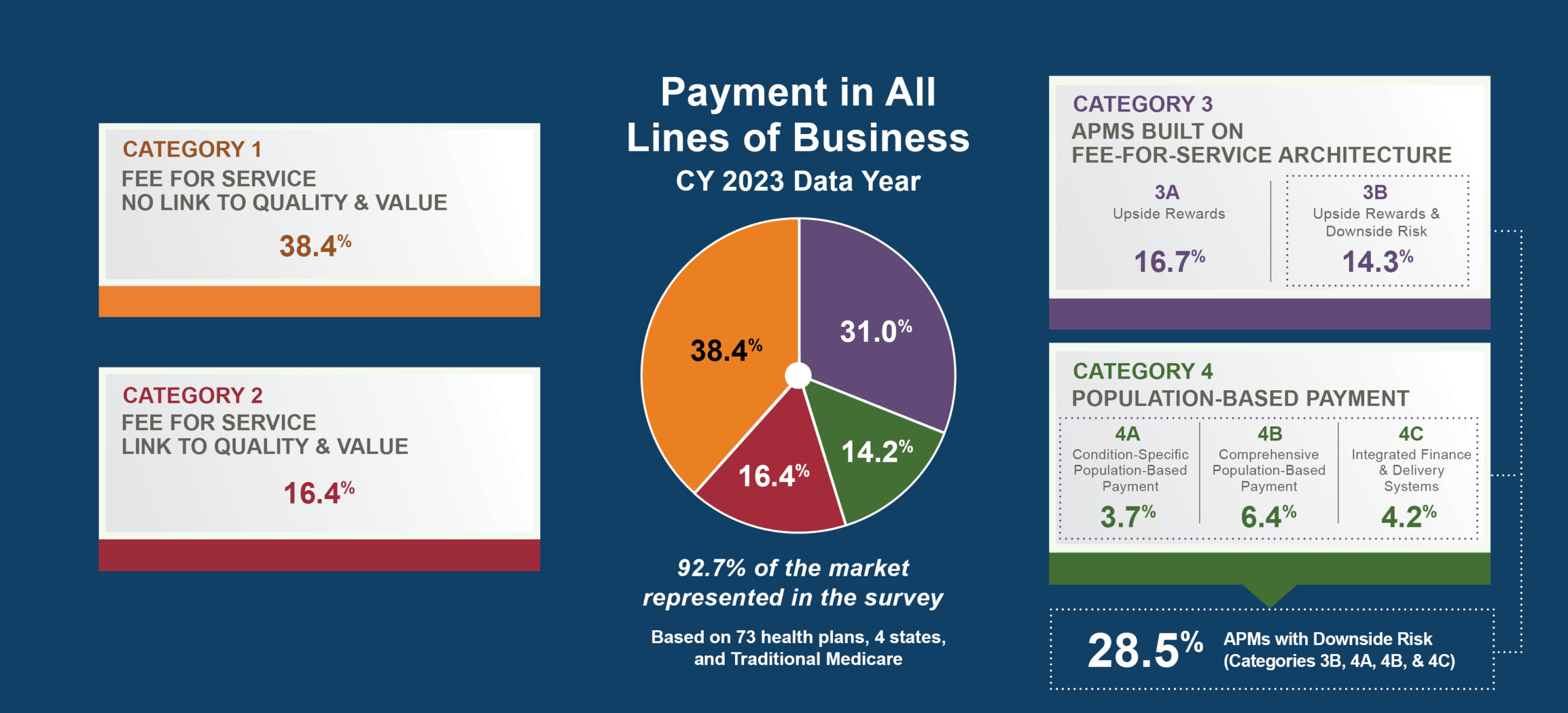

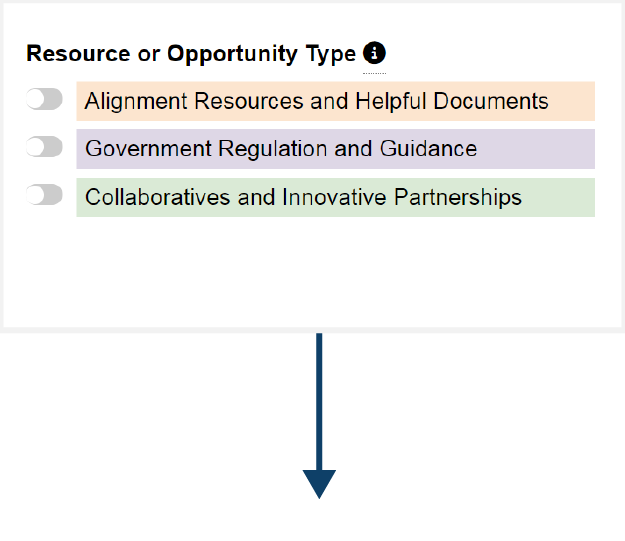
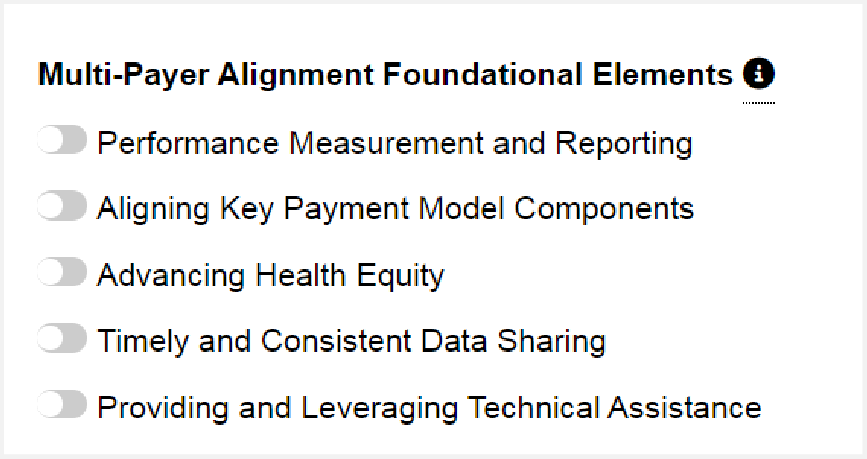




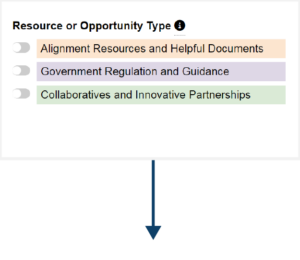

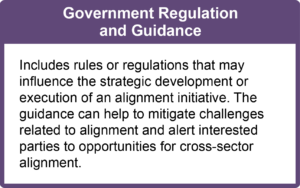
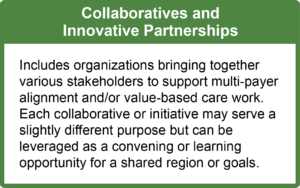
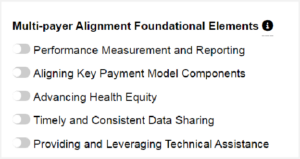




 Emily DuHamel Brower, M.B.A., is senior vice president of clinical integration and physician services for Trinity Health. Emphasizing clinical integration and payment model transformation, Ms. Brower provides strategic direction related to the evolving accountable healthcare environment with strong results. Her team is currently accountable for $10.4B of medical expense for 1.6M lives in Medicare Accountable Care Organizations (ACOs), Medicare Advantage, and Medicaid and Commercial Alternative Payment Models.
Emily DuHamel Brower, M.B.A., is senior vice president of clinical integration and physician services for Trinity Health. Emphasizing clinical integration and payment model transformation, Ms. Brower provides strategic direction related to the evolving accountable healthcare environment with strong results. Her team is currently accountable for $10.4B of medical expense for 1.6M lives in Medicare Accountable Care Organizations (ACOs), Medicare Advantage, and Medicaid and Commercial Alternative Payment Models. Mr. James Sinkoff is the Deputy Executive Officer and Chief Financial Officer for Sun River Health (formerly known as Hudson River HealthCare), and the Chief Executive Officer of Solutions 4 Community Health (S4CH); an MSO serving FQHCs and private physician practices.
Mr. James Sinkoff is the Deputy Executive Officer and Chief Financial Officer for Sun River Health (formerly known as Hudson River HealthCare), and the Chief Executive Officer of Solutions 4 Community Health (S4CH); an MSO serving FQHCs and private physician practices. Victor is the Chief Medical Officer for TennCare, Tennessee’s Medicaid Agency. At TennCare, Victor leads the medical office to ensure quality and effective delivery of medical, pharmacy, and dental services to its members. He also leads TennCare’s opioid epidemic strategy, social determinants of health, and practice transformation initiatives across the agency. Prior to joining TennCare, Victor worked at Evolent Health supporting value-based population health care delivery. In 2013, Victor served as a White House Fellow to the Secretary of Health and Human Services. Victor completed his Internal Medicine Residency at Emory University still practices clinically as an internist in the Veteran’s Affairs Health System.
Victor is the Chief Medical Officer for TennCare, Tennessee’s Medicaid Agency. At TennCare, Victor leads the medical office to ensure quality and effective delivery of medical, pharmacy, and dental services to its members. He also leads TennCare’s opioid epidemic strategy, social determinants of health, and practice transformation initiatives across the agency. Prior to joining TennCare, Victor worked at Evolent Health supporting value-based population health care delivery. In 2013, Victor served as a White House Fellow to the Secretary of Health and Human Services. Victor completed his Internal Medicine Residency at Emory University still practices clinically as an internist in the Veteran’s Affairs Health System. Dr. Brandon G. Wilson, DrPH, MHA (he, him, his) joined Community Catalyst as the Director of the Center for Consumer Engagement in Health Innovation, where he leads the Center in bringing the community’s experience to the forefront of health systems transformation and health reform efforts, in order to deliver better care, better value and better health for every community, particularly vulnerable and historically underserved populations. The Center works directly with community advocates around the country to increase the skills and power they have to establish an effective voice at all levels of the health care system. The Center collaborates with innovative health plans, hospitals and providers to incorporate communities and their lived experience into the design of systems of care. The Center also works with state and federal policymakers to spur change that makes the health system more responsive to communities. And it provides consulting services to health plans, provider groups and other health care organizations to help them create meaningful structures for engagement with their communities.
Dr. Brandon G. Wilson, DrPH, MHA (he, him, his) joined Community Catalyst as the Director of the Center for Consumer Engagement in Health Innovation, where he leads the Center in bringing the community’s experience to the forefront of health systems transformation and health reform efforts, in order to deliver better care, better value and better health for every community, particularly vulnerable and historically underserved populations. The Center works directly with community advocates around the country to increase the skills and power they have to establish an effective voice at all levels of the health care system. The Center collaborates with innovative health plans, hospitals and providers to incorporate communities and their lived experience into the design of systems of care. The Center also works with state and federal policymakers to spur change that makes the health system more responsive to communities. And it provides consulting services to health plans, provider groups and other health care organizations to help them create meaningful structures for engagement with their communities. Tamara Ward is the SVP of Insurance Business Operations at Oscar Health, where she leads the National Network Contracting Strategy and Market Expansion & Readiness. Prior to Oscar she served as VP of Managed Care & Network Operations at TriHealth in Southwest Ohio. With over 15 years of progressive health care experience, she has been instrumental driving collaborative payer provider strategies, improving insurance operations, and building high value networks through her various roles with UHC and other large provider health systems. Her breadth and depth of experience and interest-based approach has allowed her to have success solving some of the most complex issues our industry faces today. Tam is passionate about driving change for marginalized communities, developing Oscar’s Culturally Competent Care Program- reducing healthcare disparities and improving access for the underserved population. Tamara holds a B.A. from the University of Cincinnati’s and M.B.A from Miami University.
Tamara Ward is the SVP of Insurance Business Operations at Oscar Health, where she leads the National Network Contracting Strategy and Market Expansion & Readiness. Prior to Oscar she served as VP of Managed Care & Network Operations at TriHealth in Southwest Ohio. With over 15 years of progressive health care experience, she has been instrumental driving collaborative payer provider strategies, improving insurance operations, and building high value networks through her various roles with UHC and other large provider health systems. Her breadth and depth of experience and interest-based approach has allowed her to have success solving some of the most complex issues our industry faces today. Tam is passionate about driving change for marginalized communities, developing Oscar’s Culturally Competent Care Program- reducing healthcare disparities and improving access for the underserved population. Tamara holds a B.A. from the University of Cincinnati’s and M.B.A from Miami University.


 Dr. Peter Walsh joined the Colorado Department of Health Care Policy and Financing as the Chief Medical Officer on December 1, 2020. Prior to joining HCPF, Dr. Walsh served as a Hospital Field Representative/Surveyor at the Joint Commission, headquartered in Oakbrook Terrace, Illinois.
Dr. Peter Walsh joined the Colorado Department of Health Care Policy and Financing as the Chief Medical Officer on December 1, 2020. Prior to joining HCPF, Dr. Walsh served as a Hospital Field Representative/Surveyor at the Joint Commission, headquartered in Oakbrook Terrace, Illinois.








